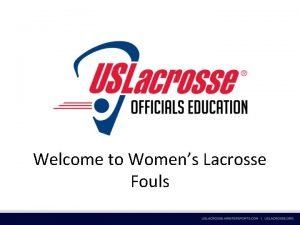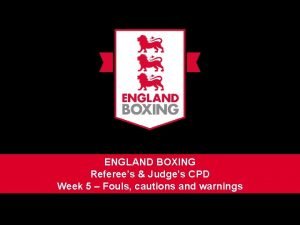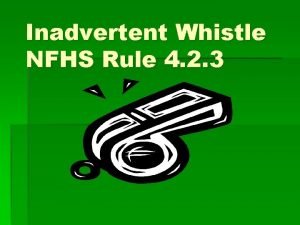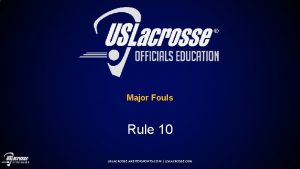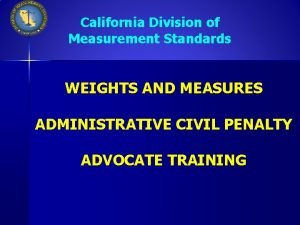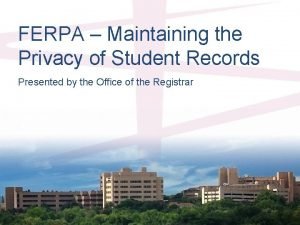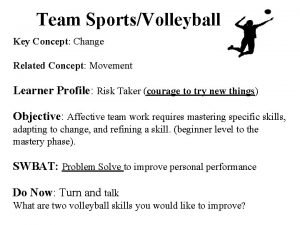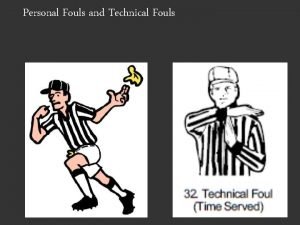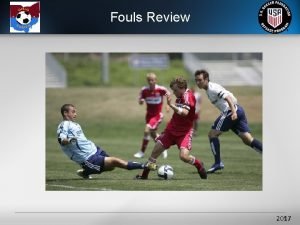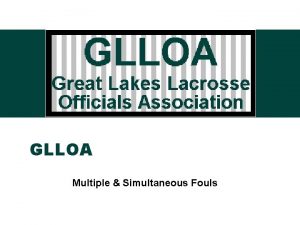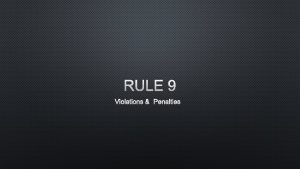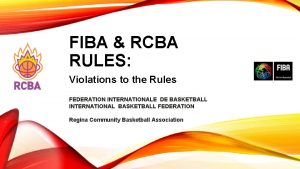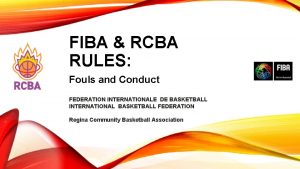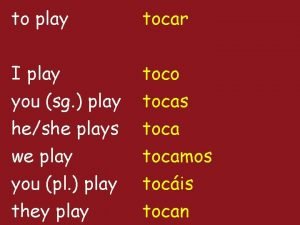Rules 5 6 Violations and Fouls PLAY ON












- Slides: 12

Rules 5 & 6 Violations and Fouls

PLAY ON If a player commits a loose-ball technical foul or crease violation and the offended player’s team may be disadvantaged by the immediate suspension of play, the official shall visually and verbally signal “Play-on!” (Mechanic 16). The whistle shall be withheld until the play ends or advantage is gained or lost.

Fouls with possession by the team that was fouled: • Throw the flag straight up into the air (10 to 15 feet). • Yell “Flag down!” • Allow the offensive team (with possession) to complete their play. (Slow whistle mechanic if necessary) • Sound your whistle to stop play when the rules require you to. (See “Rule 7”) • Make certain all residual action among the players has ceased. (continued next page)

Fouls with possession by the team that was fouled: • Turn toward the table and announce the following information: - The uniform color of the offending player. - The number of offending player (and signal the number with your hands). Technical Foul - The foul the player committed (give signal). - The time to be served (30 SEC. , 1 to 3 minutes). - If the penalty is non-releasable. - Who will have possession and where the ball will restart (e. g. , “Blue ball, free clear”; “Blue ball, outside the box”). Direction of Play

The Crosse: Minimum of 6. 5” at the widest part of the head. Overall length: 40” to 42” or 52” to 72” (4 long poles permitted on the field at one time)

Illegal Crosse Illegal Stick Illegal Pocket Locked

Mechanic 13: Equipment Check Procedure As previously mentioned, equipment checks are to be done during dead ball situations, such as: • During a team time-out. • After a goal. • Before a face-off. • Between periods. These checks should be done so they have a minimal impact on the flow of the game. Different areas have different policies on equipment checks, so be sure to check with your trainer to find out the local procedures. In particular, be certain to find out whether you are expected to conduct inspections in local youth lacrosse contests. One equipment-check plan that works well is to do two checks per team in the first half after goals, then do one check per team in the second half at some time other than after a goal.

Technical Fouls Personal Fouls Crease violations Holding Illegal offensive screening Illegal procedure Conduct foul Interference Offside Pushing Stalling Warding off Withholding ball from play Cross check Slashing Illegal body check Illegal field (NCAA only) Illegal goals Illegal crosse Illegal equipment Tripping Unnecessary roughness Unsportsmanlike conduct Expulsion (fighting, tobacco, flagrant misconduct)

Personal Fouls Cross Check Tripping Illegal Check Unnecessary Roughness Slash Unsportsmanlike Conduct

Non-releasable Personal Fouls Ejection Illegal Stick Locked Penalties Illegal Gloves Illegal Pocket Unsportsmanlike Conduct

Simultaneous fouls are non-releasable for the shorter penalty time.

What does each sequence of signals tell you? A B C
 Women's lacrosse fouls
Women's lacrosse fouls Boxing fouls
Boxing fouls Fouls that occur after an inadvertent whistle
Fouls that occur after an inadvertent whistle Technical vs personal foul
Technical vs personal foul Major fouls
Major fouls Major fouls
Major fouls Weights and measures violations
Weights and measures violations Campaign with responsibility life orientation grade 12
Campaign with responsibility life orientation grade 12 Ferpa violations
Ferpa violations What are recognized violations of cultural norms?
What are recognized violations of cultural norms? Ctip for acquisition and contracting professionals
Ctip for acquisition and contracting professionals Administrative laws apply only to traffic violations
Administrative laws apply only to traffic violations Signs in volleyball
Signs in volleyball
